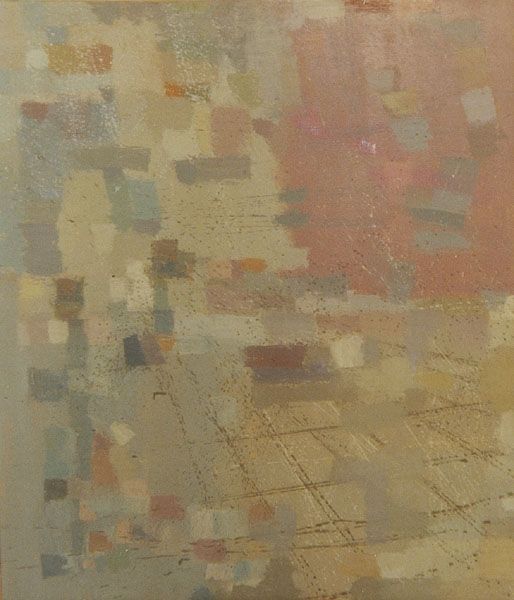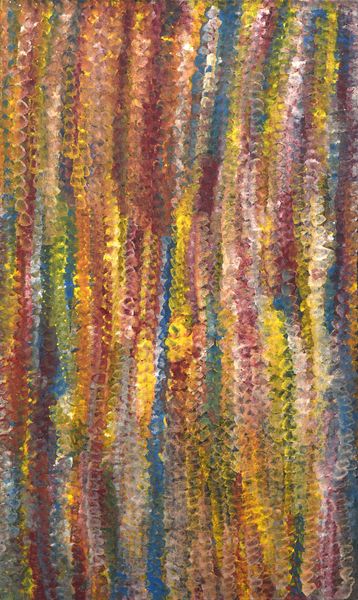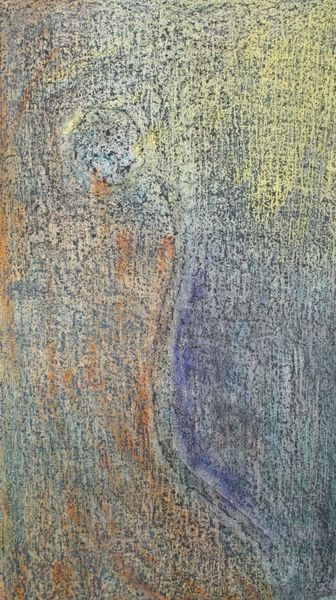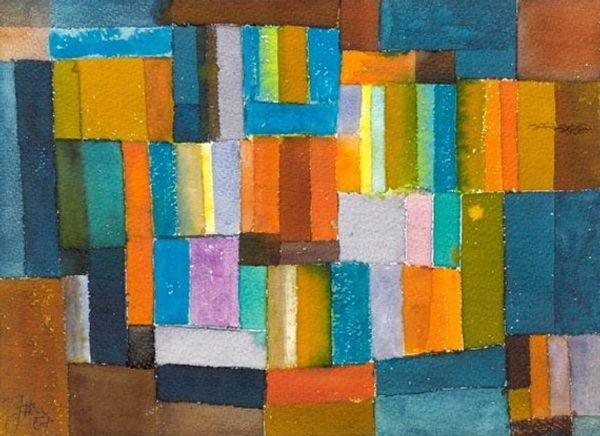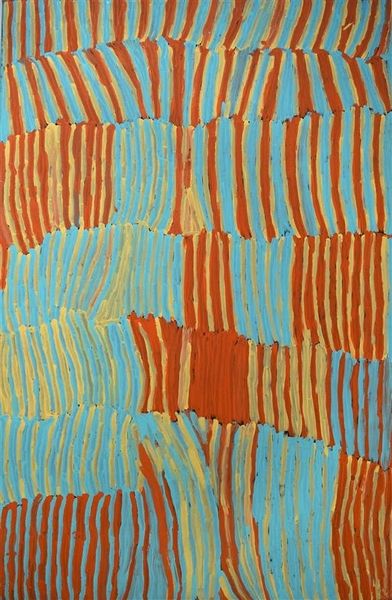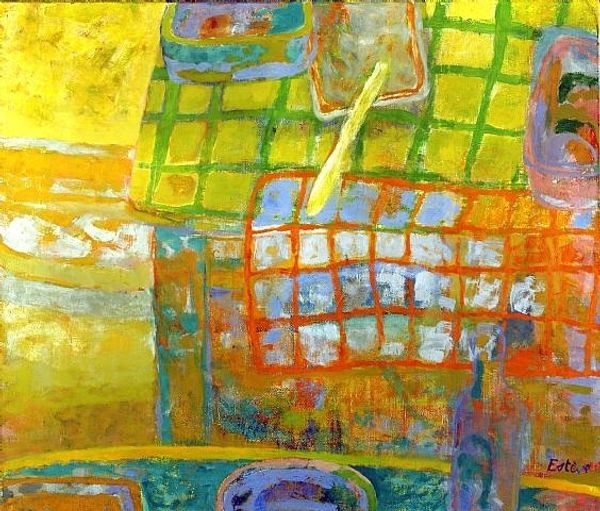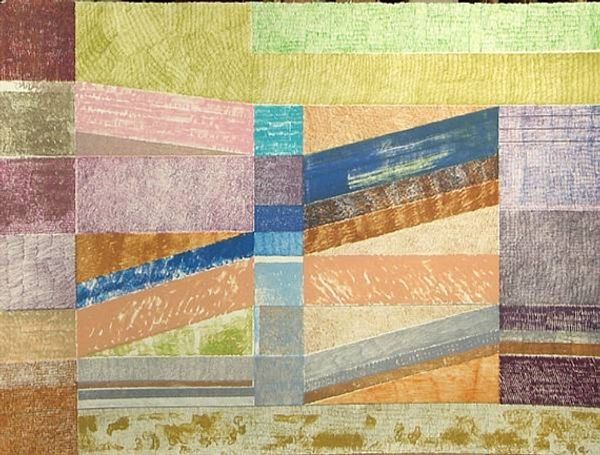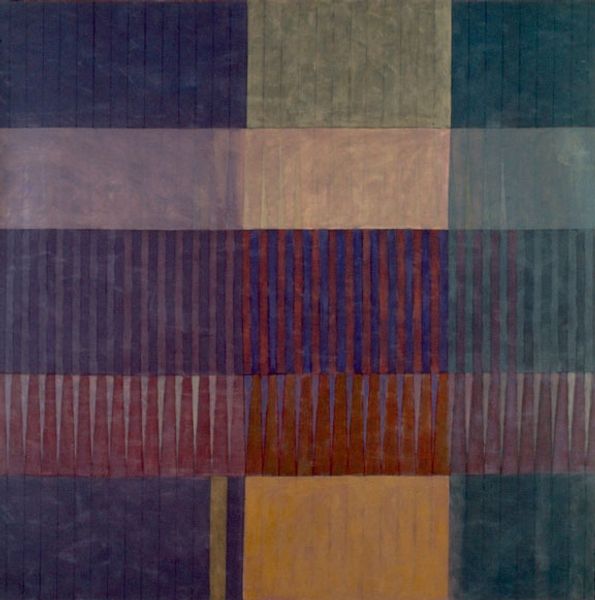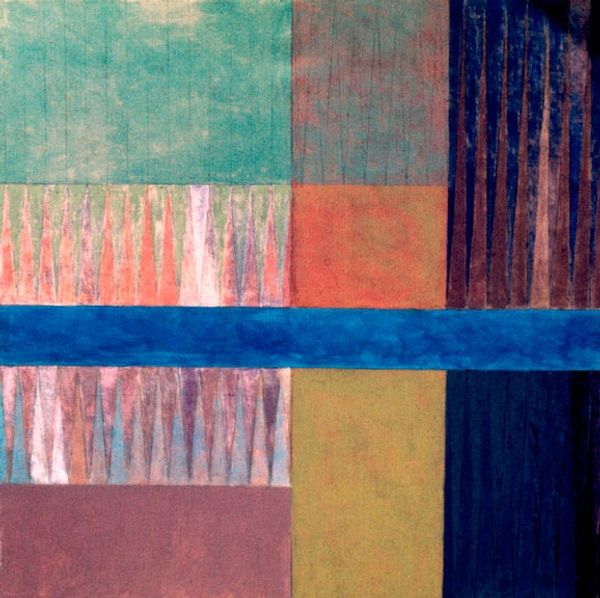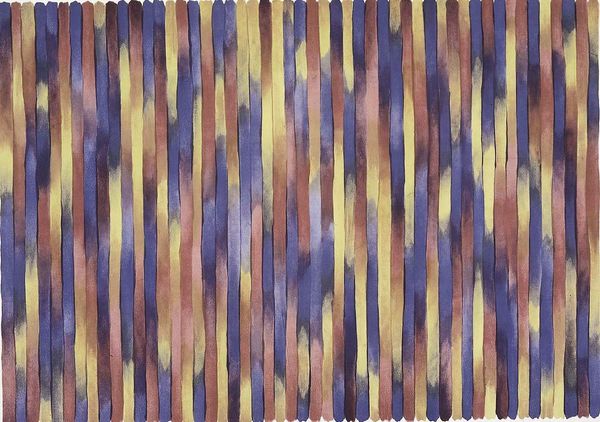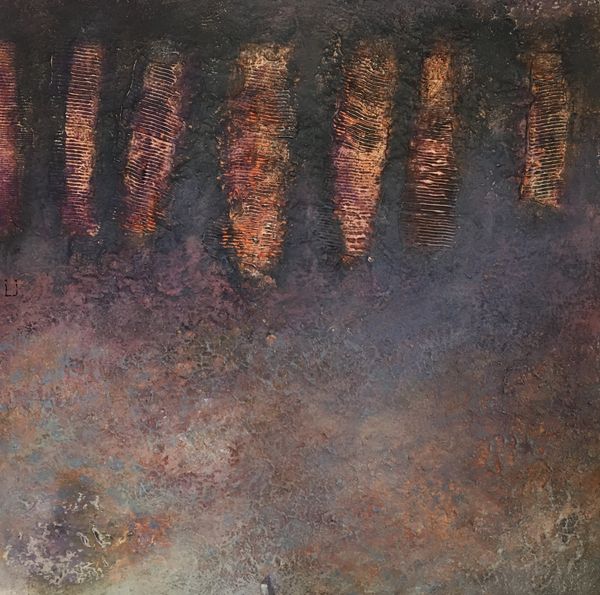
Copyright: Jimmy Ernst,Fair Use
Editor: We're looking at Jimmy Ernst's "Dusklight" from 1980, created with acrylic on textile. I'm struck by how the geometric shapes contrast with the organic, almost cellular-looking background. It creates a really interesting tension. What do you see in this piece, particularly given its historical context? Curator: I think your observation about tension is spot-on. Ernst, the son of Max Ernst, certainly inherited a surrealist sensibility. But viewing this piece through a historical lens, I see the anxieties of the late 20th century reflected in the juxtaposition of rigid forms and chaotic backgrounds. Abstract Expressionism had already become institutionalized by this time, yet Ernst's matter painting feels almost like a response – or perhaps a questioning – of that canonization. How do you interpret the repeated, somewhat oppressive, geometric forms? Editor: I see them as potentially representing order imposed upon nature or even societal structures pressing down on individuality. Does the fact that it is painted on textile give more to your historic reading? Curator: Absolutely. The textile medium lends itself to associations with domesticity and craft, often considered "lesser" art forms. By using textile, is Ernst subtly critiquing the traditional hierarchy of art? Moreover, it moves away from the bravado sometimes associated with Abstract Expressionism and gestures to process-based work and its cultural implications. Perhaps it reflects the changing roles of art and craft in the late 20th century as notions of taste change, and the impact of institutions like museums began changing? Editor: That makes a lot of sense! I hadn't considered the medium's inherent political undertones. It definitely adds a layer of depth to the artwork and allows for it to connect better with its historic era. Curator: Precisely. Considering how artists interact with – and react against – established norms really allows us to engage more deeply with both the art object and the era in which it was produced.
Comments
No comments
Be the first to comment and join the conversation on the ultimate creative platform.
